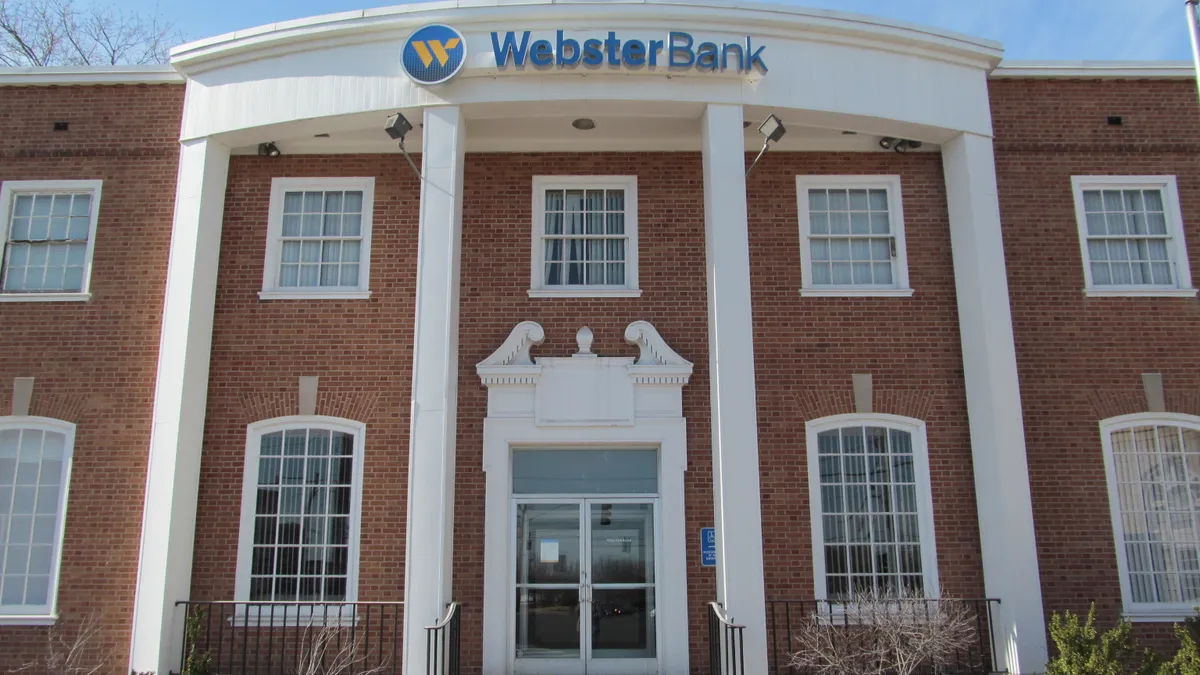Goldman Sachs is “considering strategic alternatives” for its consumer business, CEO David Solomon said at the bank’s long-awaited investor day Tuesday.
Solomon did not detail what those options might be, leaving open the possibility of a sale of its credit card business or even the GreenSky installment-lending platform it bought less than 18 months ago.
“I’ve certainly reflected a lot over the course of the last three years,” Solomon said, according to The Wall Street Journal. “There were some clear successes, but there were also some clear stumbles.”
Many Goldman investors will undoubtedly lump the bank’s consumer-banking push under “stumbles.”
Goldman last month disclosed nearly $4 billion in losses since 2020 and attributed them to its Platform Solutions unit, which includes GreenSky, credit cards and a subset of Marcus business.
The bank aims to grow Platform Solutions to a pretax break-even point by 2025, it said Tuesday.
"While nothing is ever a straight line, we are making progress on our path to profitability,” Stephanie Cohen, who leads Platform Solutions, said Tuesday of the timeline, according to American Banker.
Platform Solutions, to its credit, contains Goldman’s transaction-banking business, which is already profitable.
Tuesday’s pullback on consumer banking marks a near-180-degree turnabout from Goldman’s previous investor day in 2020, where many of the bank’s splashier stretch goals centered on businesses reassigned in October to Platform Solutions.
The bank in 2020 said it wanted to more than double deposit balances at Marcus by 2025 and nearly triple its consumer loans and card balances in the same time frame.
"Sometimes we fall short. Sometimes we don't execute. But we always learn and adapt," Solomon said Tuesday, according to Reuters.
About Goldman’s consumer business, “it became clear that we lacked certain competitive advantages and that we did too much too quickly,” Solomon said, according to The Wall Street Journal.
If there’s one area upon which Solomon pinned the bank’s hopes Tuesday, it may be asset and wealth management, a segment he described to CNBC as "the real story of opportunity for growth for us.”
Goldman outlined plans to grow revenue organically in that division by a high-single-digit percentage over the next three to five years, generating fees that are far more stable than the bank’s relatively volatile trading operations.
The bank, meanwhile, wants to trim $30 billion of legacy investments to less than $15 billion by the end of 2024 and sell them all in the next three to five years, according to the Financial Times.
Goldman is also planning to find buyers for a $4.5 billion portfolio of consumer loans created through Marcus loans business, said Marc Nachmann, the bank’s global head of asset and wealth management.
The dual message of scaling back the consumer focus and expanding elsewhere appeared to leave some analysts with whiplash.
“They could have come out and said we made an error, we are putting it all up for sale, and it’s egg on our face,” Gerard Cassidy, a Royal Bank of Canada analyst, told Bloomberg. “They could have said we are committed to this business and turn it profitable through organic means. But having a blended message was a confusing one. Are you going to keep it or are you going to sell it?”
Cassidy called Goldman’s consumer ambitions a “distraction” and an “albatross.”
Another industry observer, Ed Wachenheim, chief executive of Greenhaven Associates, equated it to “a pimple on a beautiful lady,” in comments to The Wall Street Journal.
Wells Fargo analyst Mike Mayo likened it to NBA legend Michael Jordan's ill-fated exploration of baseball.
"You're like one of the greatest of all time in what you do, your core business," Mayo told American Banker. "But these extracurricular activities have really hurt your reputation, hurt your financials, and seems like you took too long to kind of cut some of your losses."
More than anything, some analysts sought a time frame for Goldman’s rebalancing. “I know that everyone wants answers to things,” Solomon said, according to CNBC. “Clearly I can’t answer that.”
Solomon urged shareholders to take the long view, and observe the bank’s results over the past three years rather than looking solely at 2022.
In that respect, Tuesday’s investor day hewed closer to the “strategic update” Goldman issued last year than to its relatively ambitious 2020 predecessor.
Solomon warned last year that 2021’s record-setting numbers, including a 24.3% return on tangible common equity were not “sustainable in any way.”
Goldman on Tuesday reiterated a goal of 15% to 17% ROTE, in line with the target the bank established last year.
“We’re focused on profitability, the right strategy and will be nimble and flexible,” Solomon said Tuesday, according to The Wall Street Journal.
The investor day may prove crucial for Solomon’s tenure atop the bank. Goldman launched a 3,200-employee cull in January as a cost-control measure. But Solomon, at a meeting this month with the bank’s partners, said he waited too long to initiate the cuts.
Some partners, perhaps in reaction to sagging morale at the bank and precipitous cuts to bonus pools, have considered bringing their concerns about Solomon’s leadership directly to the bank’s board, Business Insider reported this month.
Goldman’s chief operating officer, John Waldron, on Tuesday, appeared to refute that account of the partner meeting, calling it “extremely productive” and “valuable.”
“Our partners walked out of that meeting very optimistic about the future of the firm, very optimistic about the investments we’re making,” Waldron told Bloomberg on Tuesday.






















